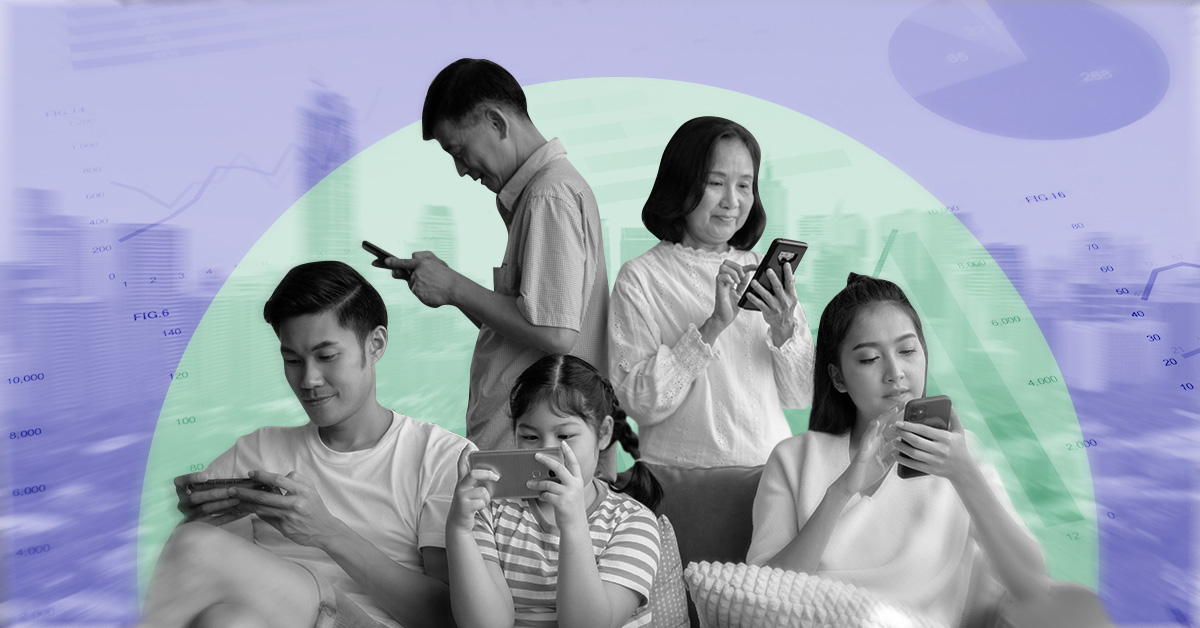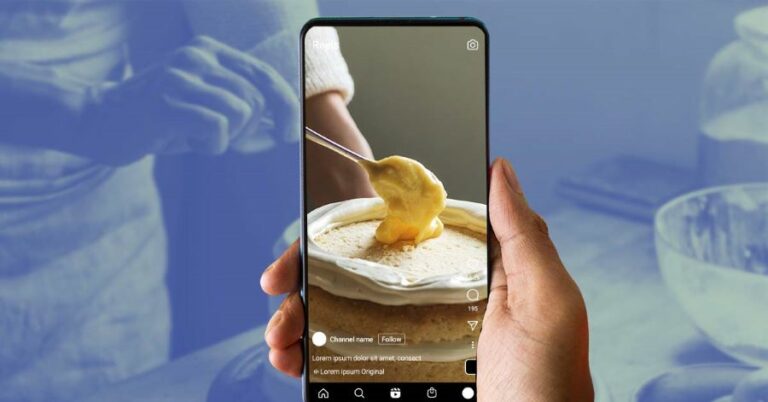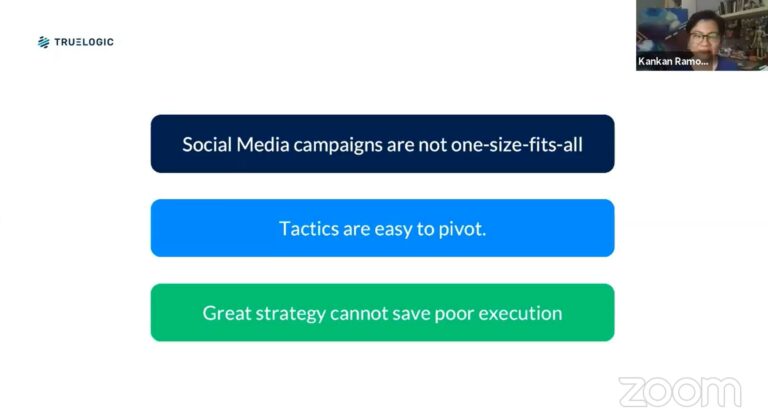Truelogic Episode 91 Recap: Understanding the 2024 Filipino Digital Consumers

Podcast Transcription:
Berns San Juan: Hi, and welcome to another episode of the Truelogic DX podcast. And you know, I’m sort of hoping that for you, this has become the place where you put your finger on the pulse of the Philippine digital economy. Today, we’re going to be talking about the Filipino digital consumer. As the Philippine digital landscape continues to evolve, understanding these consumers is more crucial now than ever, especially if your business is not just looking to thrive in our economy, but is looking to make a mark in the Philippine market.
Demographics and Digital Access
So, first things first, let’s talk about demographics and digital access. Let’s start with who are these people that are online. Who are these people that are buying from Lazada, buying from Shopee? In essence, the Filipino digital consumer is sort of like a vibrant mix. There are young and old netizens, but approximately 60% of internet users in the country are between the ages of 18 and 34, with the most viable economic age being 25 to 34. You know, K to 12, they’re still students by the age of 22, so they’re still dependents. But the majority of internet users in the country, or at least the majority of the use of the internet, come from people between the ages of 18 to 34, with the ages of 25 to 34 being the ones that are most active in terms of online commerce. What this reflects is that we’ve got a very youthful digital population.
Now, the next one is that even though there is growing internet penetration in the country, it sort of depends on where you get your data, right? It depends on whether you get it from the World Bank, a Bain study, a Temasek study, or Facebook’s report. Like, because there are a lot of ranges, I would still say, safe to say the internet penetration stands at about 70% to 74%. You will see reports that will tell you it’s as high as 92. Those are probably not correct, but I would say 70 to 74 is a good assumption that you can make. At least for me, I base it off of, the World Bank data.
There is still a divide, however, between urban and rural activity. Urban areas enjoy more robust connectivity and it impacts their digital access. Another one is mobile usage. So as an example, with over 90% of internet users, access to the internet is usually done via a mobile device versus a PC, which is such a different turn, right? Compared to the 2014 days, where we were still seeing 60% and 70%. We’re accessing the internet through a laptop, through a PC, from the office, and so the internet has just successfully pervaded all of our lives.
Now note that almost 50% of all online transactions, 47 if I’m going to be precise, are driven by only 19% of online users. And then you’d assume that, oh of course, and course those 18% are from Metro Manila. However, that’s not the case. Only 38% of all e-commerce occurs in Metro Manila. Right? So pretty interesting that e-commerce and digital participation are not as concentrated in Metro Manila.
Online Behavior and Preferences
Filipinos are social media aficionados. We are staying consistently at above 10 hours of online connectivity. Like I think We Are Social first brought that data up in 2018 when the Filipino audience was the most online. However, now you can break that apart and what you’ll see is that Filipinos spend about four hours a day on social media platforms. A little more than four hours with Facebook and YouTube being the most popular.
In the year of the… like it used to be Facebook consistently and then during the pandemic, YouTube picked up and sort of took the throne. E-commerce is booming in the country with more than 50% of internet users in the Philippines making online purchases. The largest industries that benefited from this awakening have been fashion, electronics, and beauty products. These are all, the majority, the top favorites. Of course, content is king, and local content even more so, but more on that in another episode.
Videos and posts in Filipino tend to get higher engagement rates and higher views emphasizing the importance of localized content. And more on behavior, one of the things that businesses have to consider in terms of understanding how Filipinos are going to behave in 2024 is understanding how local events impact user behaviors. So take for example, as early as October 2023, Malacanang sent out… released a full list of the holidays for 2024.
Now, the list of holidays is comprised of 10 regular holidays, 4 additional non-working holidays, and 4 special non-banking holidays. Assuming that there are no special adjustments, this creates 8 long weekends in the country. And so what does that mean for you? Are you the kind of business that, for Truelogic, it doesn’t mean anything? It means that, you know, less work, more work to cram in fewer days, right? Because we are B2B. So our traffic hits maximum between Tuesday to Friday and then really tapers off on weekends.
But if you are the kind of business that benefits from long weekends, if you’re in hospitality or travel, how are you leveraging these upcoming events and how do you market in a timely way so that you can leverage for them? How are you optimizing for, how are you planning for, let’s say digital events, right? Cyber Mondays, Black Fridays, and I would say the most famous double-digit sale days, like 11-11 and 33 are two of the most popular ones where there’s the most online traffic.
E-commerce Trends in the Philippines

Berns San Juan: Next, let’s talk about e-commerce trends. The e-commerce market in the Philippines has been growing significantly. I think last year, we were projected to grow at about 7.4% and we grew by 8.4 I think, if I’m not mistaken, I remember my data correctly. The growth is driven by increased internet penetration and as more and more people transact online, the groupthink and the social proof just improve until the behavior becomes mainstream.
In a previous podcast, I cited a lot of interesting statistics for holiday e-shopping. Like, for example how a whopping 94% of e-shoppers are likely to try a new brand. And whereas all year round, your chances of getting a person to try something new is about 66%, about two and three. But during the holidays, your chances of getting somebody to try something new is almost 10 for 10. So amazing behavior, how are you leveraging that?
Next, travel and accommodation see a rise of about 56% during holiday seasons. How about electronics? And the fact that spending on electronics doubles during the holidays. And the holidays in the Philippines are, from October to January. Personal care products, more than double. Apparel and clothing triple in spending. So because of 13th month pay and increased liquidity and I would even say generosity that comes from Balikbayan and OFWs, there’s a lot of liquidity, there’s a lot of money that flows around on Q4 to January in the Philippines. How do you leverage that e-commerce trend for your business?
Another one is the rise of, I’m not even sure if you can still say the rise of flash sales and mega shopping events, like again, 11-11, 3-3, 12-12, where we see a huge surge in online shopping behavior, with transactions increasing by over 200% for those periods. And again, especially in electronics, personal care, and apparel, right? Like the most popular products, the most popular types of inventory move during those periods.
Another thing to look out for in terms of e-commerce trends is mobile payments. They have been gaining traction. According to a study released by the DICT, around 40% of online transactions are being completed using e-wallets indicating a shift in payment preferences. Okay, there’s a but, there’s a big but. Then, here is that despite 40% of transactions utilizing digital payments, again 40% of transactions, 40% are made by only 18% of online users. So that tells you 82% of online shoppers still pay with cash. So we’ve got a long way to go.
Okay, now just for some historical context, 10 years ago, it was 97% paid via cash. 96% pay via cash. Because the only way you could electronically pay 10 years ago was if you were one of the 3% of the population that had a credit card. So credit card, credit card utilization, and credit card access in the Philippines are still not prevalent, not even at 4%. It’s inching along the threes, but that’s it.
Impact of Culture and Local Nuances
Take for example, what I mean by this is the centrality of the family to the Filipino culture. And this sort of reflects a lot in their digital behavior. I would say, like, take for example from personal experience, half of the transactions I have are usually, actually maybe a little more than half, are as much buying stuff for people in my family as it is buying stuff for me. And that’s just in several transactions. I will say in terms of spend, a majority of my spending is probably spent more on buying stuff for the family than it is buying stuff for myself. I usually go brick-and-mortar when I’m buying stuff for myself. What can I say, I’m old school, and I like to touch and feel things.
So content and campaigns that focus on family values or community stories are likely to see higher engagement through 2024. The other thing to take note of is that there’s a strong preference for content in local languages. Again, I’ll talk about this in another episode, but over 70% of Filipinos prefer browsing content in Tagalog or even better yet, the local dialect. Now, take this number for a second. If you’re listening to this podcast and you’re thinking, well not me, I like stuff in English, well guess what? You’re in the minority. You’re in the 30% of Filipinos that prefer stuff in English or read faster in English or think in English, but the majority of the population, 70% of the Filipino people, so 70% of about 114 million people, prefer seeing marketing content or they welcome marketing content more in the local language and even more so in their dialects.
Challenges and Opportunities in the Philippine Market
So one of the challenges in the Philippine market is the diverse demographic and cultural landscape. Again, 7,100 islands and then again high tide or low tide, right, and it requires more nuanced and localized marketing strategies. With varying levels of digital literacy across regions, creating campaigns, like when you create a marketing campaign, what we tell our clients is what you want to look for is your least common demographic, right? You’re looking for your least common demographic. If your content is going to be accessible, it has to be accessible to the people with the simplest understanding because that allows you to reach a huge swath of your audience versus creating three marketing campaigns, you know, one for your Masa, the other for your more elitist persona and that kind of jazz.
There are opportunities in personalized marketing, but in a previous episode we talked about, how personalized marketing is not possible for you unless you begin to capture your captive data. Over 60% of Filipino consumers, based on a couple of surveys, have expressed that they would welcome content if it was relevant to them. They would welcome content, and marketing material about products and services that they feel genuinely improve their quality of life, genuinely make their work easier, and so on.
Okay, the other challenge I already mentioned earlier, 60% of transactions are conducted with mobile wallets, but 82% of online shoppers still pay in cash. And so there’s some progress to be made there. And you know, to me, this is where, kudos to guys like DragonPay, who made enablement of COD available for local e-commerce players early on, like super early on, ahead of everybody else. So that’s Dick Chiang and his team. And I would say to the Maya team, back in the day when they were still Voyager, to Globe, all of these have made an impact in terms of how we behave transactionally.
Now, the other thing to pay attention to in terms of opportunities is the expected growth rates per industry. Take for example, are you in the industry of online media? If you are, are you aware that the expected compounded annual growth rate for your industry is about 13% for this year? Right? Like are you in transportation? The expected growth rate for your industry is 19%. Are you in the food business? The expected compound annual growth rate for the food industry for 2024 is 19%. Are you in online travel? Just when I thought we were done with the revenge travel, apparently not. It has an expected growth rate of 88% for 2024. So I hope a lot of you manage to get your travel itches scratched in 2023 because it’s gonna get semi-crazy in 2024. And digital payments are expected to grow by 24% in 2024.
So to sum up this conversation, the Filipino digital consumer is dynamic, socially connected, and increasingly tech-savvy. For marketers, this presents a landscape rich with opportunities, provided that they can tap into the unique cultural and behavioral nuances of this audience that they’re sensitive to the economic situations of their vertical that they are sensitive to local events, and that they maximize those fall within the calculus of their marketing campaigns for the year.
That’s it for the episode for today. I hope you enjoyed this quick dive into the digital world in the Philippines. If you are not part of our subscription list yet, please do. If you like the episode, like it on the shorts, subscribe to us. Subscribe to our Spotify, Google, and Apple accounts so that you can get alerts whenever we publish a new one. We post these on Facebook and YouTube and feel free to share your thoughts with us. Stay tuned for the next episode. As always, I want to thank our marketing team and our friends at Pod Machine for continuing to power the Truelogic DX Podcast. I’ll see you in the next episode. Cheers!










